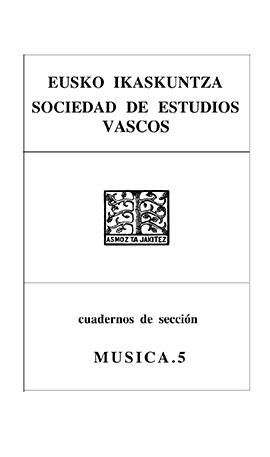Sobre "Tristán" y "Parsifal"

Soler, Josep
- Publication year:
- 1991
- Publication place:
- Donostia-San Sebastián
- ISSN:
- 0213-0815
Summary
It is an attempt to analyse two plays -the first one, considered as a "love story" and the other one as a "religious drama". But in the author?s opinion, the relation between Isolde and Tristán is the dramatizing of the struggle of human beings. On the one hand, there is the princess (who only seems to be eager for power and glory, through destruction and blood-shed carried away by her maternal instinct, being extremely absorbing and leading the one she picked out to be the means for achieving her aims, to "supreme delight". On the other had, the naïve heroe is undergoing a bitter conflict, probably the reflection of Wagner?s own anxieties, between his unquestionable love for Isolde, his loyalty to the King and his own innocence with regard to the maternal anxiety of the "surely, an image of Cosima" who is leading him to absolute nihilism imposible to stop. Both of these operas show in such an admirable way evidence of the destruction of the "supreme values", which have been so brilliantly described by Nietzsche is conceling a bloody and ambiguous dialectics. Nothing is "just as it should be", and from behind the "highest principles", the bloody is looming up articulation of a dramatic interval -the divine moment that is driving the tragedy forward - also mentioned by Hölderling and Bettina Brentano: Wagner?s own anxiety and needs are expressed in those painful and terrible "actions" ; they are "Freudian" dramas, deprived of any feature of a "traditional" opera. These "actions", toghether with "The Ring", are "mystery plays" and blood and final oblivion are its sacramental elements: Tristán and Isolde, facing the sea ; Perceval and Kundry at the black and dark Castle, where the Holy Grail is keptSing up and download the publications of Eusko Ikaskuntza
Are you a registered member?. Access




